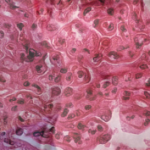
iomis/shutterstock.com
SAN FRANCISCO—Rheumatologists have to look no further than the American College of Rheumatology guidelines to know that the options for patients with lupus nephritis are sometimes not very appealing.
The first-line choices are either mycophenolate mofetil (MMF) plus glucocorticoids or cyclophosphamide (CYC), also with glucocorticoids—and all of their attendant side effects. The problem: evidence, said Joan Merrill, MD, chair of the Clinical Pharmacology Research Program at the Oklahoma Medical Research Foundation. Her work focuses on lupus and she was one of the contributors to the guidelines. The work was presented to attendees of the 2015 ACR/ARHP Annual Meeting.
“Our task was to make recommendations based on the best evidence,” Dr. Merrill said. “And the problem here is that we don’t have sufficient evidence yet to do what our technology has now made possible, which is to approach this disease in a much more rational way.”
The limited recommendations have left clinicians foraging for guidance—tidbits and nuances that can be gleaned from the literature to help them find something that works, especially for their harder-to-treat patients.

Dr. Merrill
Dr. Merrill drew a comparison between lupus nephritis treatment and mixed martial arts (MMA), disclosing that she is the mother of an MMA fighter.
“In MMA, you are going into the octagon to fight some of the most lethal fighters in the world, and you cannot be a one-trick pony—you’ve got to know how to box, you’ve got to know how to kickbox, and you’ve got to know how to roll around on the ground and strangle people,” she said. “And I think that’s a very good analogy for what we’re facing, because lupus nephritis is a formidable opponent.”
MMF vs. CYC
There have been only three rigorous induction trials directly comparing MMF with CYC—and only one of them, a 140-patient trial in 2005, found that MMF was superior.1 Another study, an international trial involving 370 patients, discouragingly found that the six-month response rates for both drugs were not much higher than 50%.2
“This means that we have a slightly under 50% chance of progressing to significant kidney damage,” Dr. Merrill pointed out.
She also noted that the trial in which MMF was found to be superior to CYC had a much higher percentage of African-American subjects, who have been found in other studies to do worse on cyclophosphamide.
But beyond this starting point, other treatment options and strategies are emerging in the literature, if only in morsels, Dr. Merrill suggested.
Tacrolimus
A randomized study in 2014 out of Hong Kong, involving 150 patients, found that tacrolimus and MMF were essentially equivalent as induction therapy in lupus nephritis. Patients were Class III through V.3 This might offer some guidance in the absence of other options, Dr. Merrill said. There were more flares with tacrolimus in the maintenance period, but the difference was not found to be significant.
